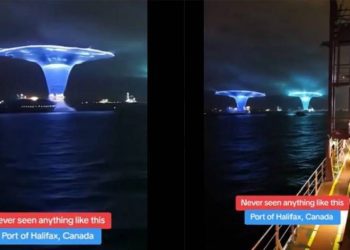STAR Trek fans are disappointed to learn that Vulcan — the home planet of the beloved character Spock — does not really exist in our galaxy, as previously thought.
Scientists first came across what they believed to be a small planet orbiting the star 40 Eridani A, where Spock is said to have grown up, in 2018.

Star Trek fans are disappointed to learn that Spock's home planet, Vulcan, does not appear to really exist as first thought in 2018.[/caption]

Scientists in the past proposed that exoplanet HD 26965 off the star 40 Eridani A matched the description and location of the fictional Vulcan[/caption]

But more recent analysis using the radial velocity method revealed that the 'planet' is most likely just a cluster of wobbling light that threw off previous researchers.[/caption]

Spock was a main character on the long-lasting Star Trek series and has appeared in several films and specials as well[/caption]
Immediately dubbed Vulcan for its similar location and size to the fictional planet, Star Trek fans were initially excited to learn that at least some parts of the iconic series might be based in reality.
At the time, researchers discovered the planet using the transit method — which measures variations in starlight as the bodies move across the star's surface (from Earth's perspective), according to NASA.
Researchers even noted at the time, however, that the transit method is most accurate when observing larger supposed planets, and could give false positives for smaller bodies.
This appears to be what happened in the case of Vulcan.
A recent team out of Dartmouth University examined the possible planet using a newer process known as the radial velocity method, which can work even if a planet does not pass directly in front of its star.
Abigail Burrows, previously of NASA's Jet Propulsion Laboratory, headed the team behind the paper entitled The death of Vulcan: NEID reveals the planet candidate orbiting HD 26965 is stellar activity, published in The Astronomical Journal last month.
The radial velocity method uses high-precision instruments based atop Kitt Peak in Arizona to measure “wobbles” in starlight as the gravity of a star pulls at the planet's light.
The resulting information is more accurate than what could be gleaned using the transit method and firmly led scientists to conclude that the variations in light reported five years ago were actually just stellar light bouncing around unexpectedly.
LOOKING FOR LIGHT
Five years ago, scientists believed that this potential Vulcan had a 42-day orbit around HD 26965, a Sun-like star, that exists about 16 light-years away.
They believed that they had found evidence of a super-Earth, which is a planet larger than the Earth but smaller than Neptune.
But the original researchers also noted that these 'light dances' could possibly explain their findings, instead of there being a Vulcan-like planet.
The addition of an instrument known as NEID to the Kitt telescope changed those calculations.
Like other radial velocity instruments, NEID relies on the Doppler effect to measure shifts in the light spectrum of a star.
Measuring the different wavelengths emitting from a planet can produce a highly accurate picture of the celestial body's movements.
These wobbling motions can then be used to estimate the size and composition of the planet in question.
Dartmouth scientists said they believe the initial error came from observing a flickering of something on the star's surface or rays from a solar flare.
PLANET VULCAN DOOMED
Spock is one of Star Trek fans' most beloved characters in the long-lasting sci-fi series, played for years by actor Leonard Nimoy.
He first appeared as a science officer aboard the original starship USS Enterprise from the 1960s, and his mixed human-Vulcan heritage played a role in several plot points.
What is an exoplanet?
Here's what you need to know…
- An exoplanet is a planet that is located outside of our solar system and is orbiting its own star, like how Earth orbits the Sun.
- They are very hard to see with telescopes because they are often hidden by the brightness of their star
- Nasa sent the Kepler space telescope into orbit to find Earth-sized exoplanets that might support life
- Over 5,500 exoplanets have been discovered so far, and more missions to find even more exoplanets are planned.
- A good way to spot an exoplanet is to look for wobbly stars, because a disruption to starlight can indicate that a planet is orbiting it and therefore blocking out light on occasion.
- Exoplanets are very common in the universe, and the more we find that look like Earth, the closer we get to knowing whether we're alone out there.
With his bowl-cut hair and deadpan eyes, Spock popularized the now-famous Star Trek greeting made by raising your hand and separating your pinky and ring fingers from your index and middle fingers.
In the series, Spock often talked about his home planet Vulcan and how his culture varied from that of the other characters.
Although Vulcan survived many deadly battles throughout most of the series, the planet was destroyed in the 2009 film by a Romulan villain named Nero.
The fictional Vulcan was consumed by a man-made black hole — not so different to how some fans see the discovery and later 'disappearance' of the real-life Vulcan.

































